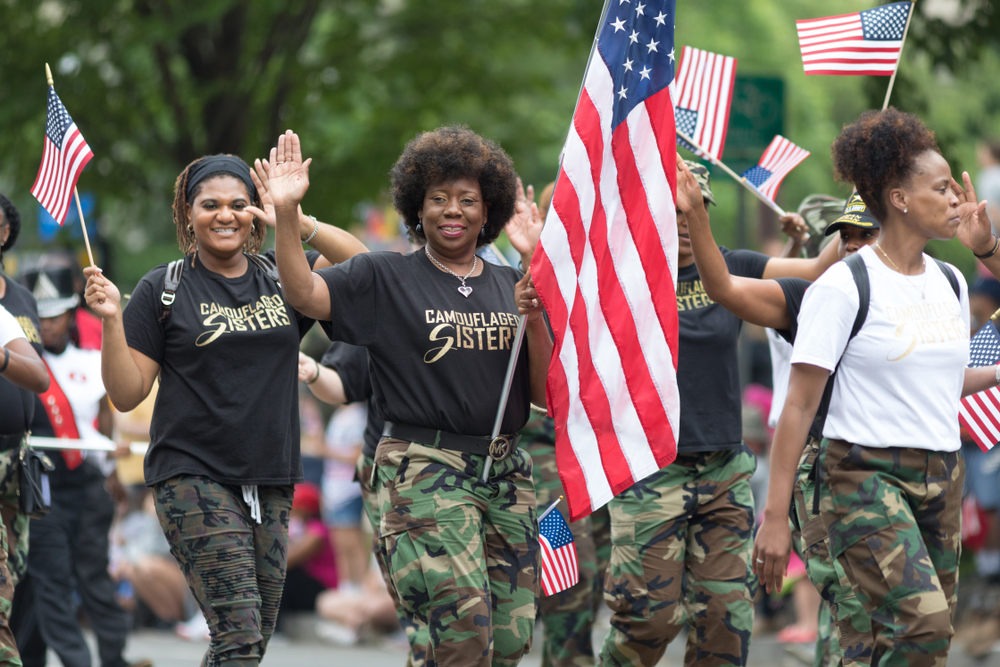It’s Memorial Day weekend, and I’ve done five extra crunches than I normally do, which means I’ve done 10 crunches to prepare my summer body because why do it in the winter when that makes the most sense, right? The meat will be on the grill, the all-white will be stained with a little barbecue, and that’s ok because it’s Memorial Day Weekend.
Ever since I can remember, it has been a non-dispute holiday, whereas the Fourth of July, Memorial Day’s big cousin, has been a source of “should we” or “we should not” celebrate this holiday in the Black community. Hell, even Thanksgiving has been given the side-eye. However, Memorial Day has managed to remain unscathed in the Black community’s celebration Rolodex. In fact, if you cuff your ear and listen to the wind closely enough, you’ll hear Frankie, Beverly and Maze records preparing to spin “Before I Let Go” over and over again. Plus, Black people love all-white parties, and that’s why no one says anything about Labor Day as well.
But did you know that Memorial Day really is a Black ass holiday? No, really, Memorial Day was actually started by Black people. Originally named Decoration Day, Memorial Day was the day when Black freed slaves would decorate the graves of fallen Black soldiers during the Civil War. Multiple cities claim to be the birthplace of the holiday, but according to Pulitzer Prize-winning historian and Yale Professor David Blight, Charleston, South Carolina, was the home of the first Memorial Day, which occurred on May 1, 1865, which was less than a month after General Robert E. Lee surrendered in Virginia. Maybe Memorial Day would have been in April, but as we know, sometimes good news does not travel as fast as it should.
Juneteenth has now entered the chat.
After uncovering an old box in a Harvard Library labeled “First Decoration Day,” Blight made an incredible discovery on the origins of the Holiday, according to the History Channel’s website, “and inside on a piece of cardboard,” was a narrative handwritten by an old veteran, plus a date referencing an article in The New York Tribune. That narrative told the essence of the story that I ended up telling in my book, of this march on the race track in 1865.
The race track in question was the Washington Race Course and Jockey Club in Charleston, South Carolina. In the late stages of the Civil War, the Confederate army transformed the formerly posh country club into a makeshift prison for Union captives. More than 260 Union soldiers died from disease and exposure while being held in the race track’s open-air infield. Their bodies were hastily buried in a mass grave behind the grandstand. When Charleston fell and Confederate troops evacuated the badly damaged city, those freed from enslavement remained. One of the first things those emancipated men and women did was to give the fallen Union prisoners a proper burial. They exhumed the mass grave and reinterred the bodies in a new cemetery with a tall whitewashed fence inscribed with the words: “Martyrs of the Race Course.”
Speaking of whitewashing, don’t you know that once the holiday started to gain momentum, the origins of it suddenly were suppressed? Color me shocked. It still would not become a nationally observed holiday until 1889. Anyway, now you are a bit more informed about the holiday. (Black) Union soldiers fought for the preservation of the Union and the eventual end of slavery, so the best thing you can do, after you’ve taken a moment of silence from the dripping sounds of barbecue, is to remember those who fought for you to be able to do so.
Cheers.








